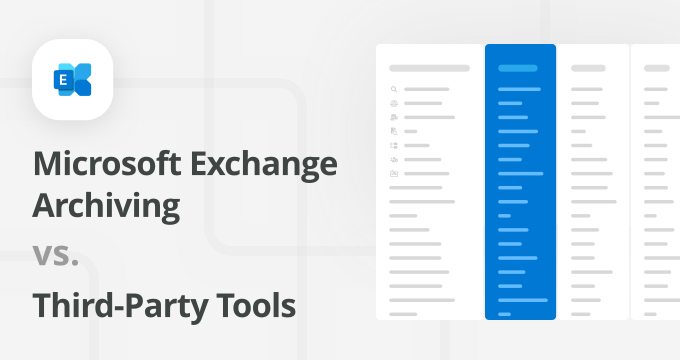In 2019, we’re seeing fourth-generation email archiving solutions entering the market. However, some legacy solutions still rely on inefficient storage reduction practices. Email stubbing seems to be especially problematic.
Email stubbing in Exchange has been a topic of debate for the last couple of years, where a number of email archiving experts warned that email stubs might be responsible for the organizations’ inability to handle a legal case or an audit.
What is email stubbing?
Email stubbing is a process which allows the email archiving solution to remove actual emails from Exchange and leaves a shortcut or a “stub” in its place. In other words, stubs are smaller versions of emails which serve as pointers or links to the originals.
There are two types of stubbing in email archiving – attachment stubbing and entire message stubbing. With attachment stubbing, only the email attachment data gets removed from the server and is replaced by a link. If users opt to stub the entire email, the message body will be replaced with a text excerpt which contains a link to the original message in the archive.
For end users, the accessibility to emails remains intact – when accessing stubbed emails, they can retrieve the full message from the archive with no delay. However, the technical issues in the background and the potential long-term repercussions of such storage-saving strategy are manifold.
What can go wrong?
Over time, stubbing creates numerous challenges, including search capability and performance issues and potential troubles in case of data loss. Although it initially reduces mailbox size, it doesn’t significantly improve server performance. In fact, Exchange issues are quite common as well.
Just recently, a company which initially used Exchange 2010 moved to Exchange 2016 only to realize that their email archiving solution suddenly stopped working. After looking into the problem, they realized that their Metalogix archiver relied on stubbing and broke down due to the Exchange update.
Jatheon’s CEO Marko Dinić repeatedly warned against the use of stubbing: “Simply put, using stubs in email archiving is a bad strategy. Organizations implement email archiving solutions primarily to ensure the long-term retention and availability of email for compliance and legal discovery.
Solutions need to be built in a way that prevents data loss. With stubbing, if there’s any data corruption or loss, it’s not possible to recreate stubs and problems ensue.
If your email archive becomes unresponsive only because you switched to a newer version of Exchange, then this goes against the whole purpose of archiving. Archiving solutions need to be flexible enough to work with all versions of all email platforms.
When it comes to stubbing, the tight integration with Exchange is a positive aspect, but if a single thing changes in the setup, even something as simple as an Exchange update, there’s a chance that something won’t work properly”.
What are the alternatives?
In 2010, Perry Clarke, then GM for Exchange Server, talked about the disadvantages of stubbing and described it as a “complex, fragile, incomplete and costly practice” to which there are now multiple alternatives.
There are solutions which rely on more advanced and less fragile storage saving processes than stubbing. Such solutions ensure that data is available and free of error and are able to capture, index and store every single email and attachment, including emails imported from other solutions in various formats. Apart from being able to ingest data from legacy systems, they are also compatible with multiple email platforms.
Jatheon is a global leader in email, social media and mobile communications archiving and eDiscovery with 15 years of experience with on-premise archiving for regulated industries and a new, next-generation cloud email archiving solution.
Unlike other archiving solutions, Jatheon relies on more advanced technology than stubbing and is also able to reduce the workload of email servers. We prioritized data integrity features such as end-to-end data full checksum protection, corruption-proof root file system and self-healing data sets to prevent silent data corruption and ensure long-term data availability.
To learn more about archiving email and other electronically stored information with Jatheon, contact us or schedule your personal demo.
Read Next: Email Archiving and the Pitfalls of Stubbing











